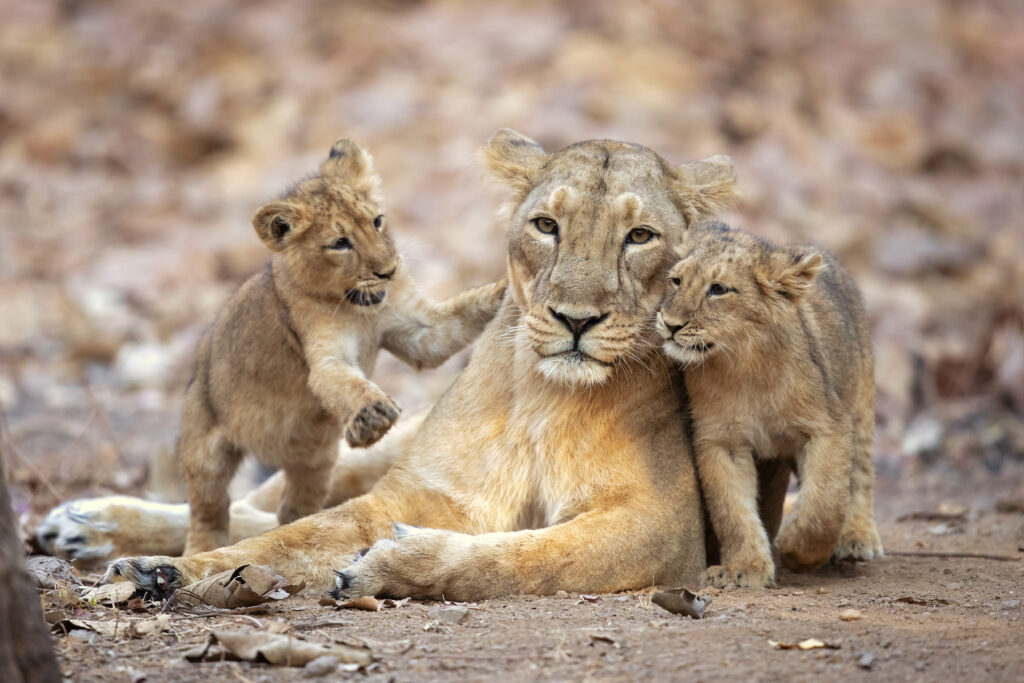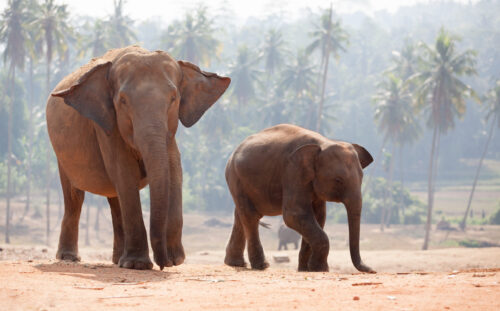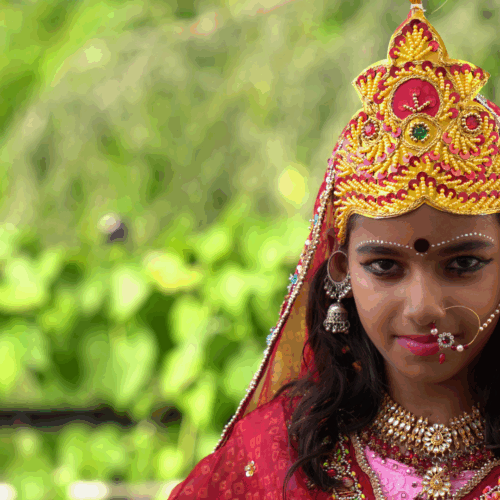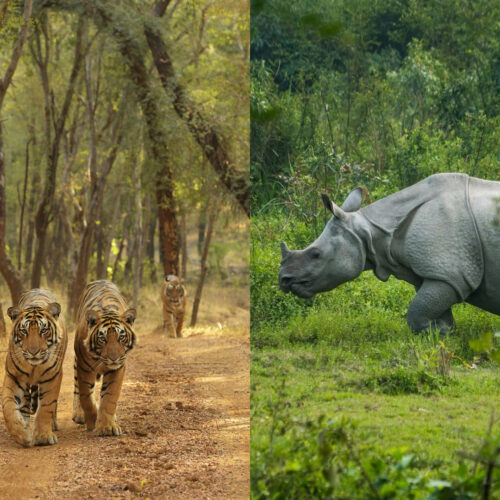India’s vast and diverse landscape is home to a multitude of fascinating wildlife species. Among them, five iconic animals stand out, commonly referred to as the Big Five of India – the Royal Bengal Tiger, the Indian Elephant, the Indian Leopard, the One-Horned Rhinoceros, and the Asiatic Lion. Below, we trace these magnificent creatures in their natural habitats.

Royal Bengal Tiger
The Royal Bengal Tiger, India’s national animal, is a symbol of strength and agility. Famous for its majestic stripes, these apex predators are found in numerous protected areas across India, including, but not limited to, the Sundarbans (West Bengal), Bandhavgarh, Ranthambore, Kanha, Jim Corbett, and Tadoba national parks. Their elusive nature and striking appearance make spotting them an unforgettable experience.

Indian Elephant
The Indian Elephant symbolizes power and majesty in Indian culture. Known for their intelligence and memory, these gentle giants are found in forested regions across the Western and Eastern Ghats, Northeast India, and the Himalayan foothills. Notable reserves where they can be seen include Nagarhole and Periyar (Kerala), Kaziranga (Assam), and Corbett (Uttarakhand).

Asiatic Leopard
The Indian Leopard is widespread throughout most of India, adapting to habitats ranging from forests and grasslands to hills and even the edges of villages. Noted for their elusive and solitary behavior, leopards can be observed in several national parks, including Jawai (Rajasthan), Bera, Kabini (Karnataka), Satpura, and Pench in MP, as well as in Sanjay Gandhi National Park in Mumbai. Their diet is highly adaptable, ranging from small insects to large ungulates.

One-Horned Rhino
Kaziranga National Park in Assam is home to the world’s largest population of the One-Horned Rhinoceros, also known as the Indian Rhinoceros. Conservation programs have been highly successful, raising the population from around 600 in the 1960s to over 4,000 today. Dudhwa National Park in Uttar Pradesh also serves as an essential habitat for these magnificent creatures through successful reintroduction efforts. With their prehistoric appearance and single horn, these rhinos are among the most unique sights in Indian wildlife.

Asiatic Lion
Once ranging from the Middle East to northern India, the Asiatic Lion now survives only in and around the Gir Forest region of Gujarat, with satellite populations in nearby areas. The current population exceeds 800 individuals as of 2025. These lions are slightly smaller than their African cousins but are equally majestic and integral to their ecosystem.
Each of these species plays a crucial role in maintaining the ecological balance of its respective habitat. Encountering the Big Five in the wild is a truly once-in-a-lifetime experience for any wildlife enthusiast.





